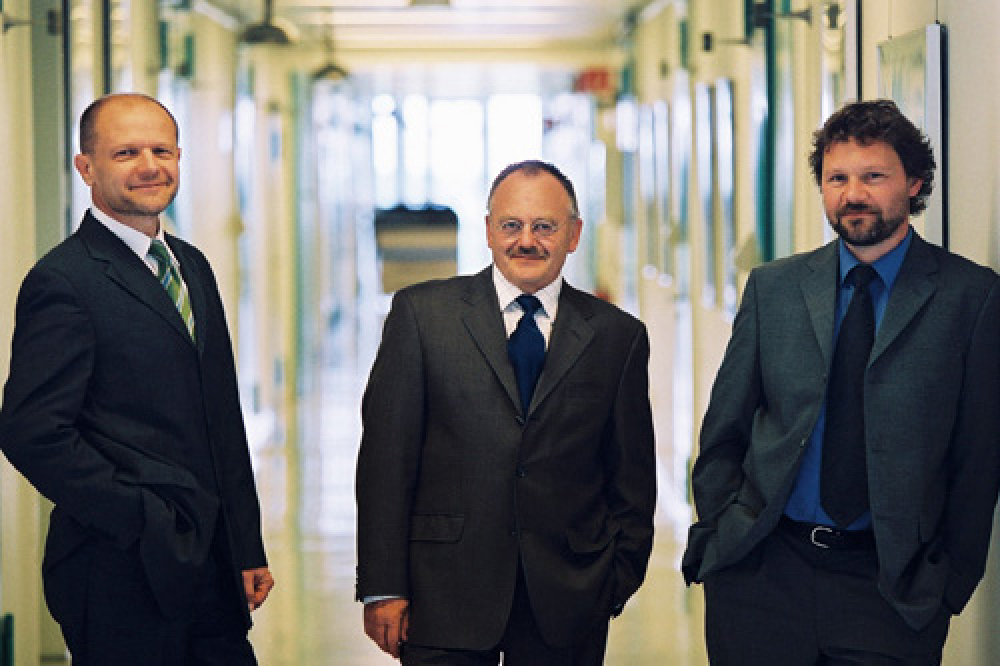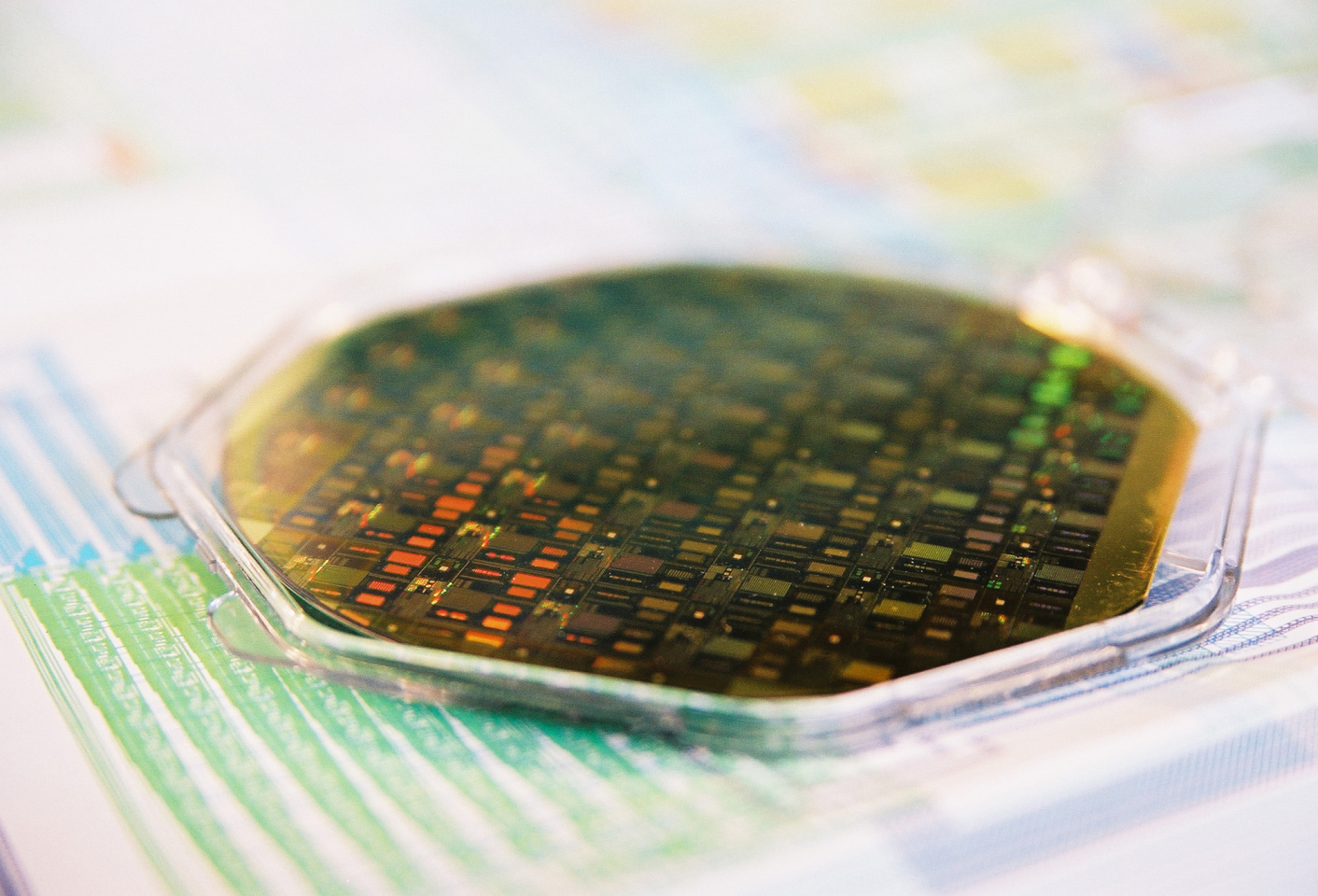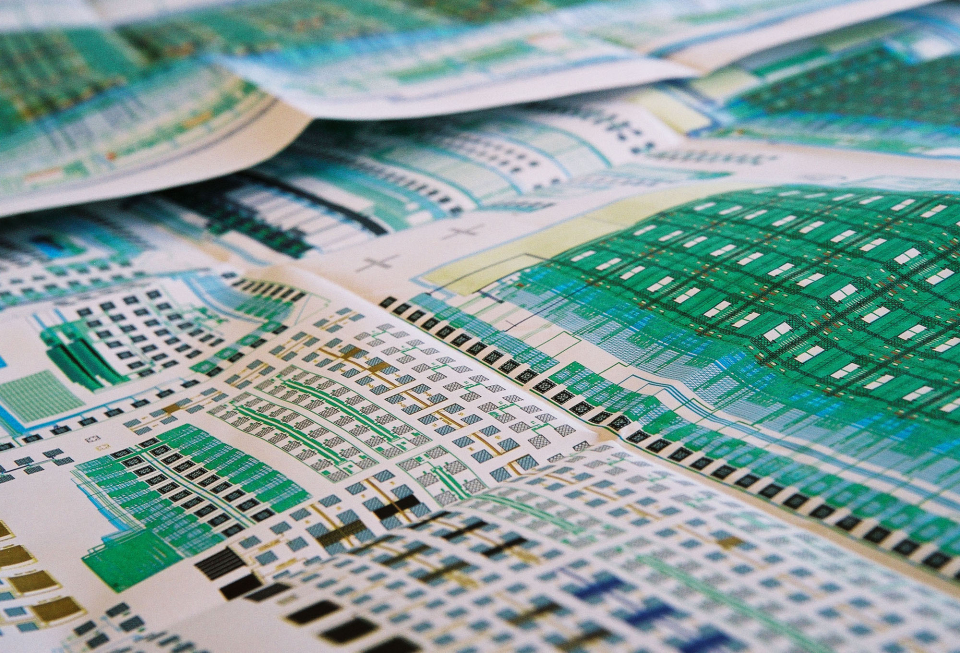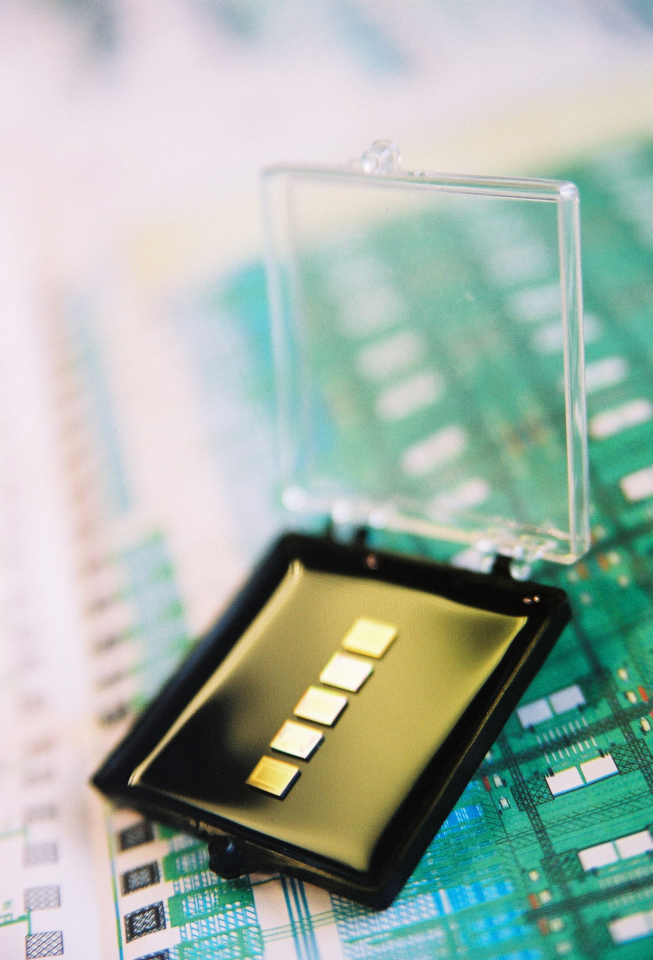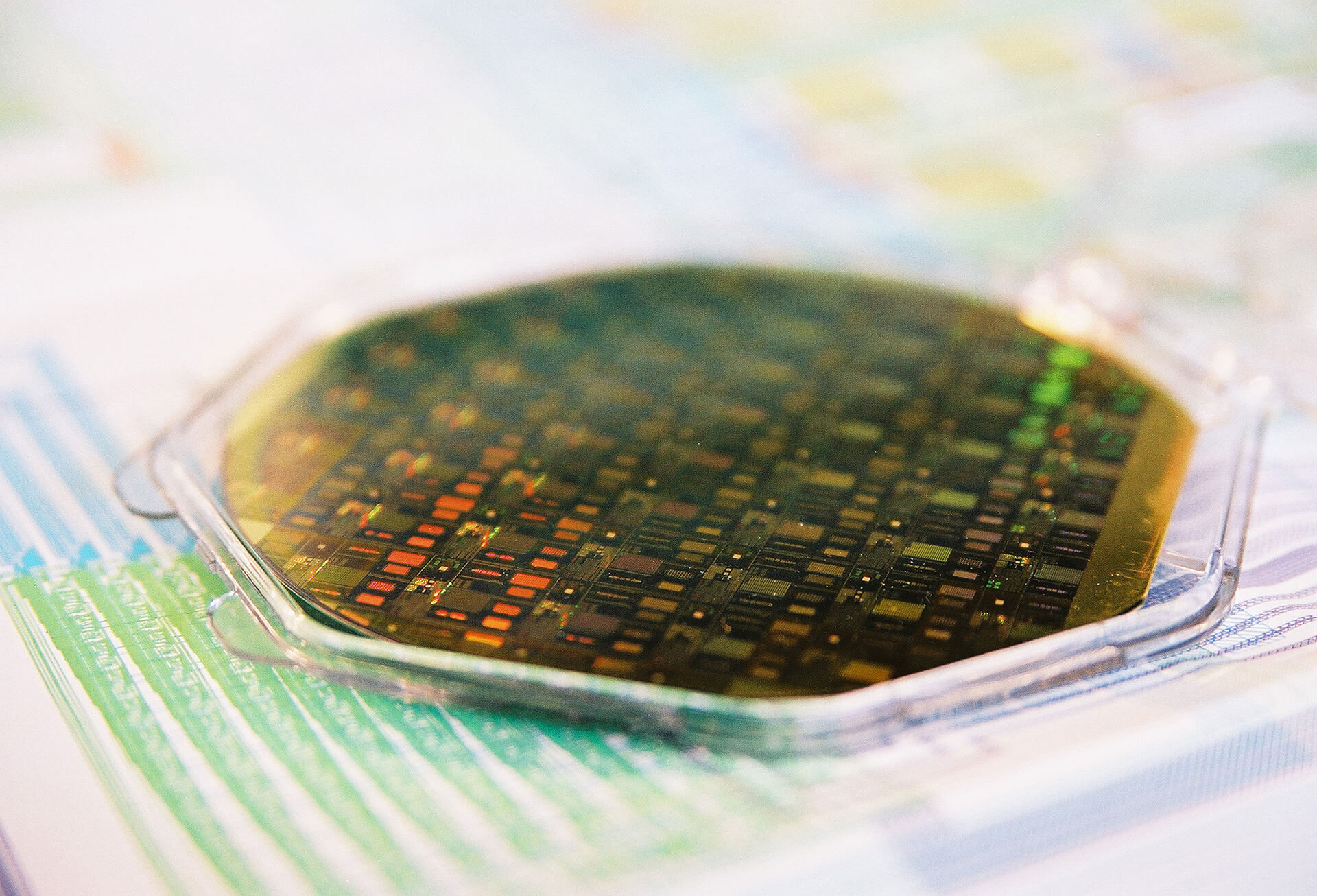
Winner 2004
Labor auf dem Chip
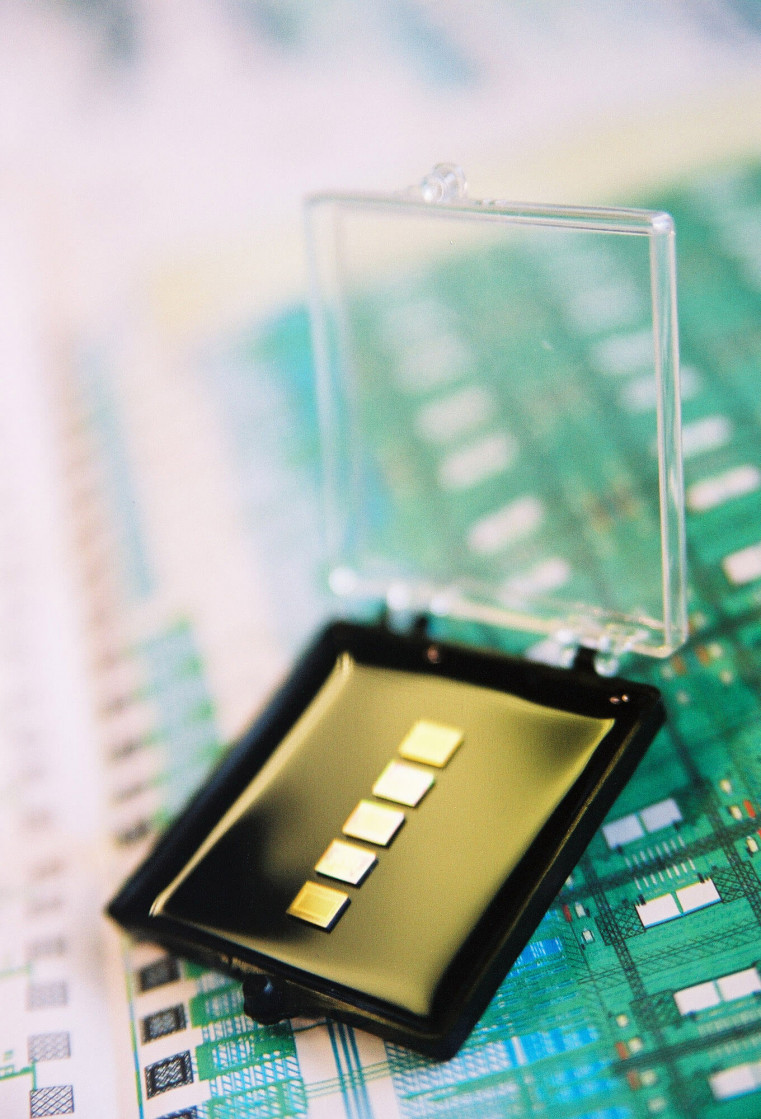
Rainer Hintsche, Walter Gumbrecht, and Roland Thewes have found an answer to this question with their invention of a technology that combines biological elements with microelectronic components on the chip. Rainer Hintsche heads the group for biotechnical microsystems at the Fraunhofer Institute for Silicon Technology IST in Itzehoe; Walter Gumbrecht is project manager for the electrical Lab-on-a-Chip systems at Siemens Corporate Technology in Erlangen, Roland Thewes is responsible for R&D projects on CMOS-based biosensors at Infineon Technologies in Munich.
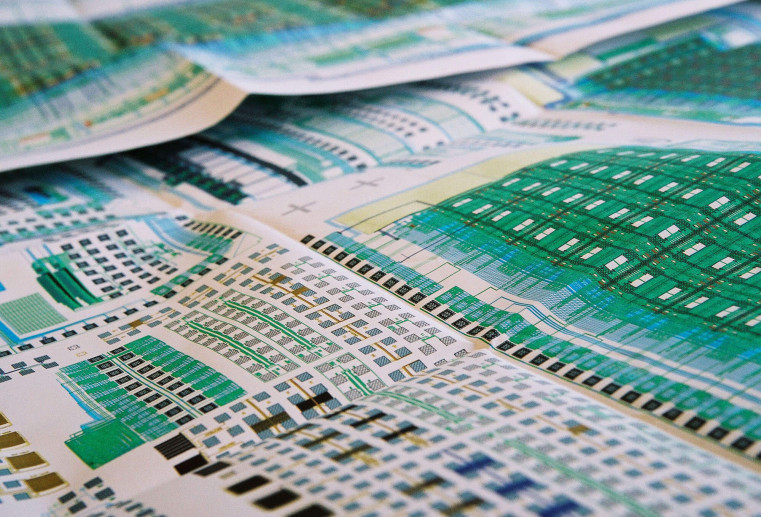
Catcher molecules fish for DNA
Using a biochip, biomolecules such as nucleic acids or proteins, can be traced in watery solutions. According to the lock-and-key principle, biomolecules anchored on the chip – so-called catchers – accurately bind certain other molecules. This produces a highly sensitive sensor for DNA or proteins. Reading of the results with a light beam, however, has usually been technically complex and expensive.
more details
Resumes
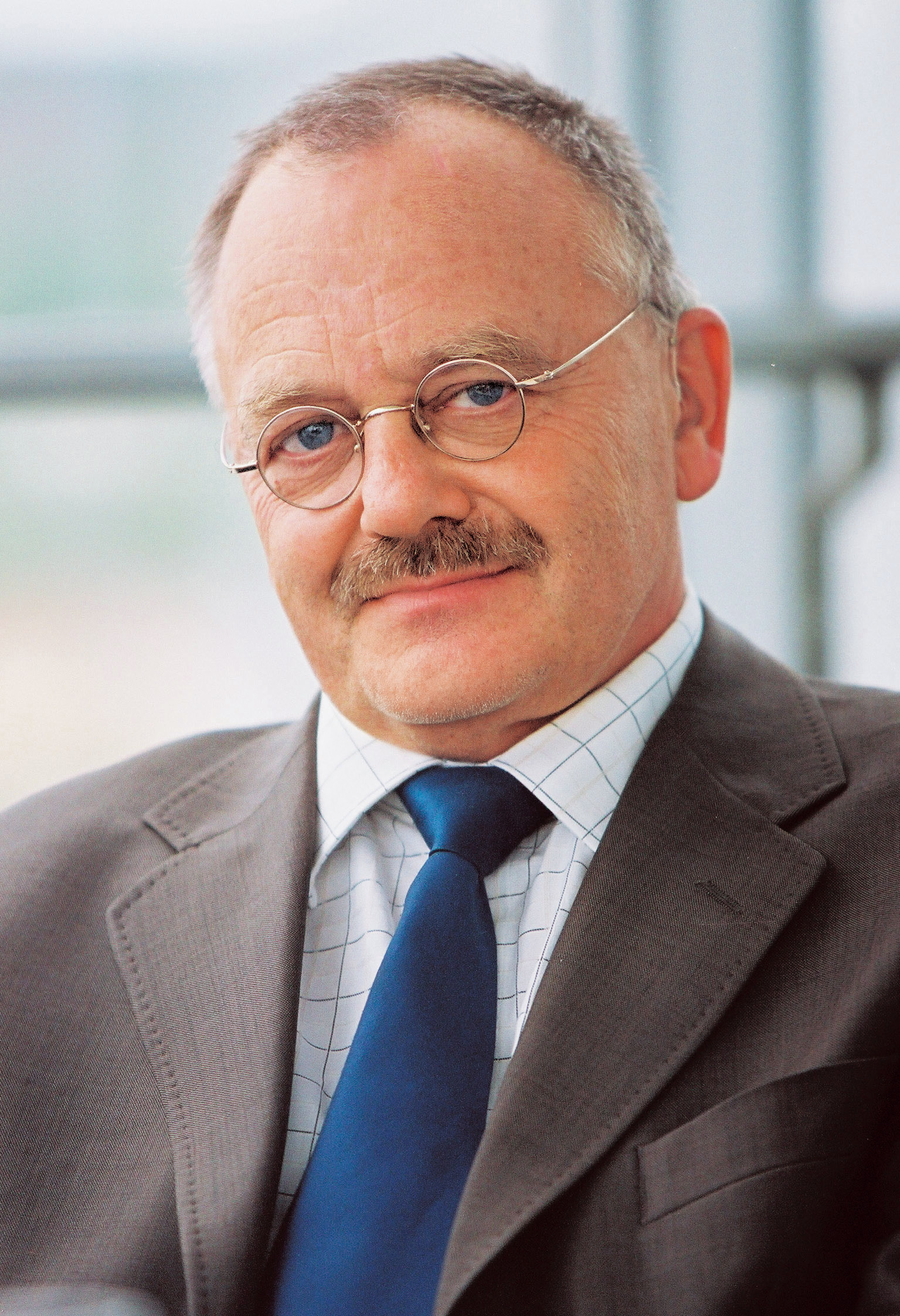
Dr. rer. nat. habil. Rainer Hintsche
- 30.05.1942
- geboren in Delitzsch
- 1961 – 1966
- Studium der Chemie an der Universität Leipzig
- 1966
- Doktorand am Institut für Biochemie, Berlin-Buch
- 1970
- Promotion
- 1970 – 1983
- Gruppenleiter NMR, Zentralinstitut für Molekularbiologie, Berlin
- 1983 – 1991
- Leiter Chip-Biosensoren, Zentralinstitut Molekularbiologie, Berlin
- 1986
- Habilitation
- seit 1991
- Abteilungsleiter Biotechnische Mikrosysteme im Fraunhofer Institut für Siliziumtechnologie, Berlin / Itzehoe
- 2000 – 2003
- Technischer Direktor bei eBiochip Systems GmbH, Itzehoe
- seit 2004
- Geschäftsführender Gesellschafter bei eBiochip Systems GmbH, Itzehoe
Ehrungen:
- 1965
- Preis der Universität Leipzig
- 1991
- Award of the Eurosensors VI. Conference, San Sebastian
- 1994
- Distinguished Paper Int. Meeting on Chemical Sensors, Rom
- 1996
- Phillip Morris-Preis
- 2002
- ISSCC 2002 Jack Raper Outstanding Technology Directions Paper Award,
San Francisco, Ca, als Co-Autor
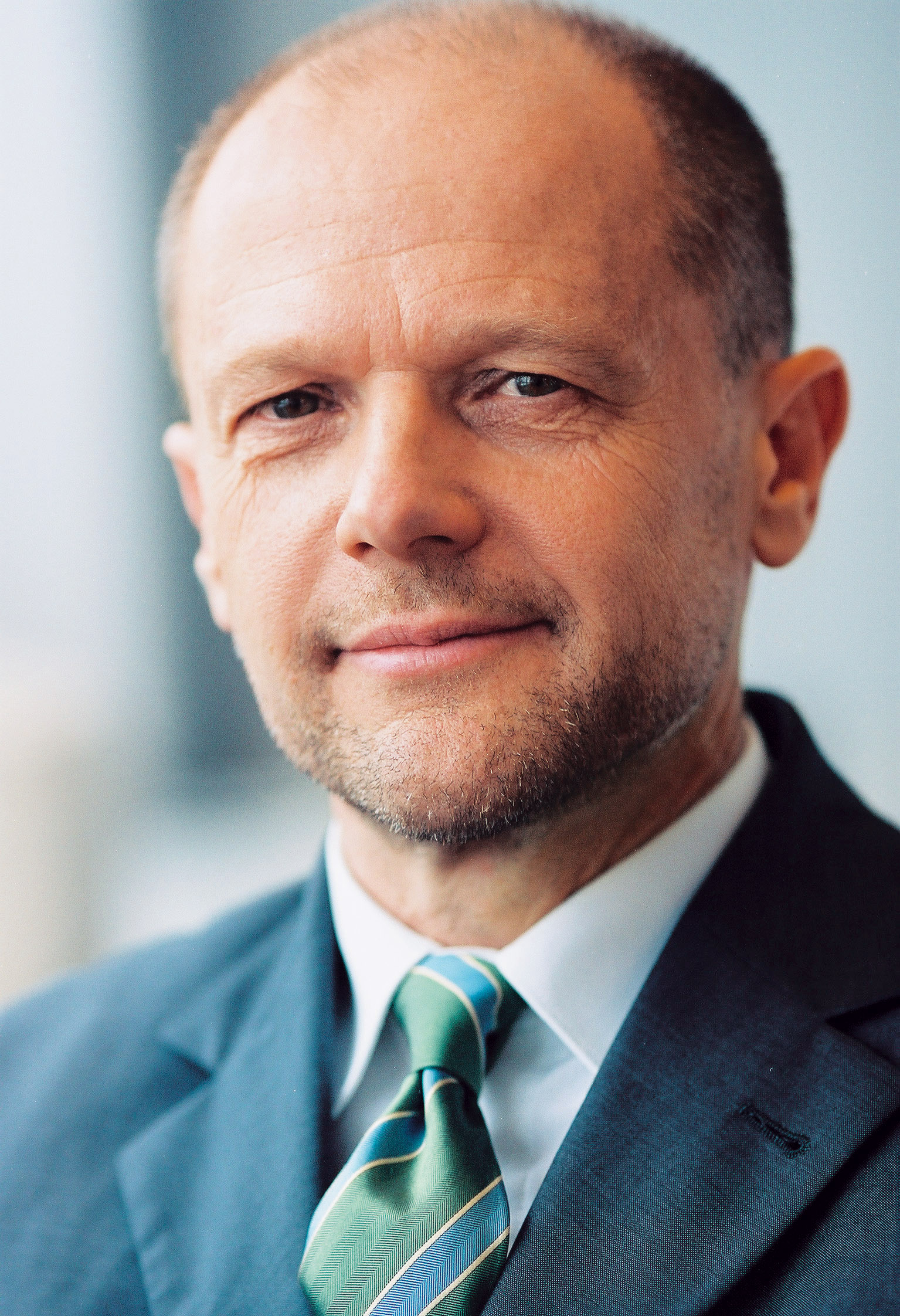
Dr. rer. nat. Walter Gumbrecht
- 20.04.1952
- geboren in Erlangen
- 1974 – 1982
- Studium der Chemie in Erlangen
- 1982
- Doktorand am Institut für Physikalische Chemie I, Erlangen
- 1984
- Promotion
- 1985 – 1989
- Aufbau eines Forschungs- und Entwicklungsteams für Mikrosystemtechnische Sensoren und Transducer bei Siemens Corporate Technology, Erlangen
- 1990 – 1999
- Projektleiter Blut-Monitoring-System, Siemens Corporate Technology, Erlangen
- seit 2000
- Projektleiter elektrische Lab-on-a-Chip-Systeme, Siemens Corporate Technology, Erlangen
- 1995 – 2000
- Mitglied im Fachausschuss „Mikrosysteme in der Medizin“, Verein Deutscher Ingenieure (VDI)
Ehrungen:
- 2002
- ISSCC 2002 Jack Raper Outstanding Technology Directions Paper Award, San Francisco, Ca, als Co-Autor Best Paper Award European Solid State Device Research Conference, als Co-Autor
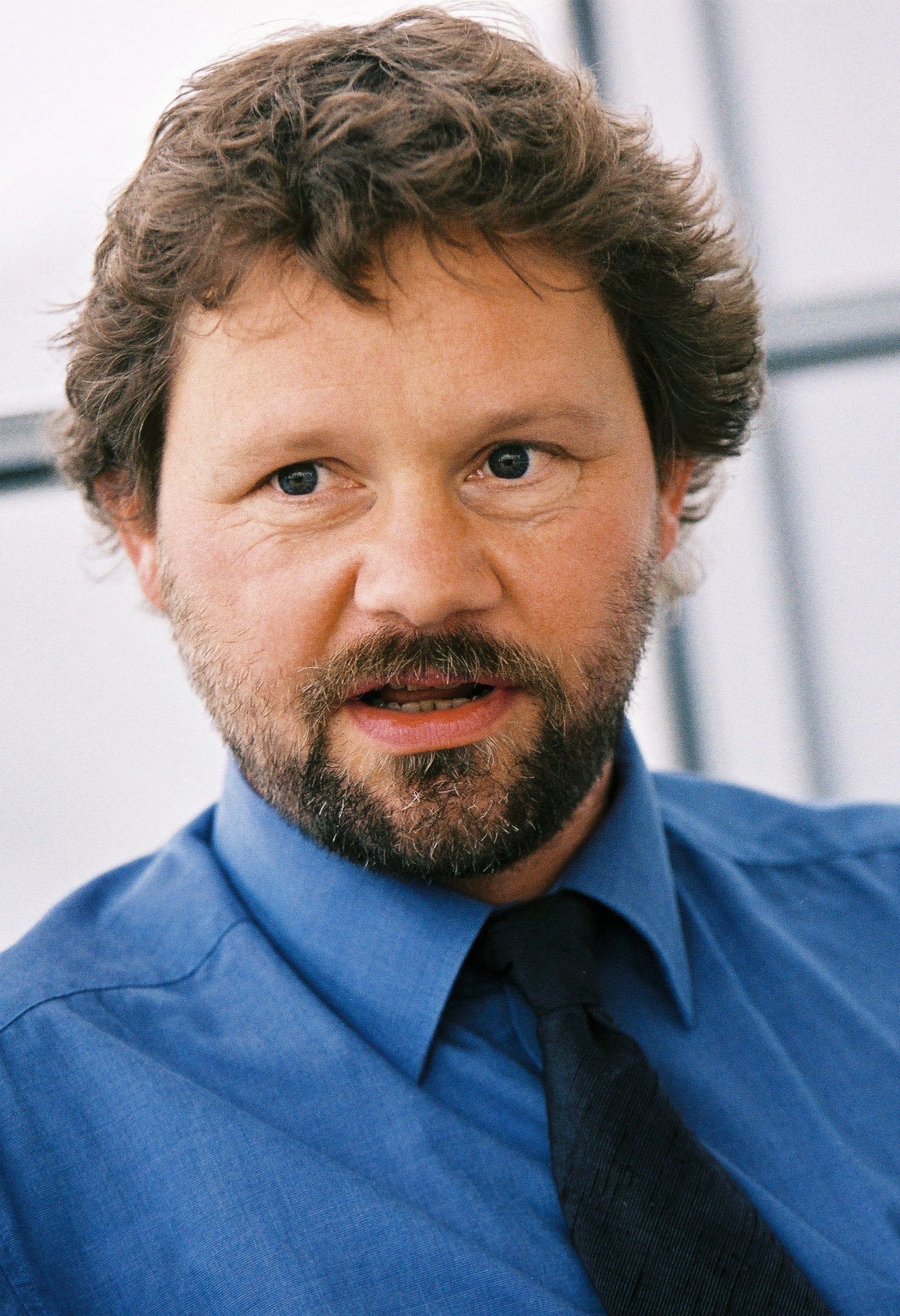
Dr.-Ing. Roland Thewes
- 22.10.1962
- geboren in Marl, NRW
- 1984 – 1990
- Studium der Elekrotechnik an der Universität Dortmund
- 1990
- Doktorand im Rahmen eines kooperativen Projektes zwischen der Siemens AG und der Universität Dormund
- 1994
- Angestellter in der Zentralen Forschung und Entwicklung, Siemens AG, München
- 1995
- Promotion in Elektrotechnik
- 1997
- Projektleitung von Projekten zur Performancebewertung und Zuverlässigkeit analoger CMOS-Bauelemente und zum CMOS-Analogschaltungsdesign
- 1999
- Übergang zu Infineon Technologies durch Ausgliederung der Halbleitersparte bei der Siemens AG, München
- seit 2000
- Abteilungsleiter in der Zentralen Forschung, Infineon Technologies, München
- seit 2000
- Leitung der Forschungs- und Entwicklungsprojekte zu CMOS-basierten Biosensoren, Infineon Technologies, München
- 1997 – 2004
- Mitglied der technischen Programm-Komitees folgender Konferenzen: International Reliability Physics Symposium (IRPS), International Electron Device Meeting (IEDM), European Symposium on Reliability of Electron Devices, Failure Physics and Analysis (ESREF), European Solid State Device Research Conference (ESSDERC)
- seit 2003
- Mitglied des technischen Programm-Kommitees der International Solid-State Circuits Conference (ISSCC)
- seit 2004
- Mitglied des IEEE Electron Devices Society Very Large Scale Integration Technology and Circuits Committee
Ehrungen:
- 1998
- Best Paper Award European Symposium on Reliability of Electronic Devices, Failure Physics and Analysis (ESREF), Kopenhagen, als Co-Autor, Vortragender und Initiator der Arbeit
- 2000
- Best Paper Award International Conference on Microelectronic Test Structures (ICMTS), Monterey, CA, als Co-Autor und Initiator der Arbeit
- 2002
- Jack Raper Outstanding Technologies Directions Paper Award International Solid-State-Circuits Conference (ISSCC), San Francisco, CA, als Erstautor und Vortragender
- 2003
- Best Paper Award European Solid State Device Research Conference Florenz, Italien, als Co-Autor und Initiator der Arbeit
- 2003
- GMM / VDE-Preis für hervorragende wissenschaftliche Leistungen im Bereich der Mikroelektronik, München, als Erstautor
Contact
Spokesperson
Dr. rer. nat. habil. Rainer Hintsche
Fraunhofer-Institut für Siliziumtechnologie (ISIT)
Abteilungsleiter Biotechnische Mikrosysteme
Fraunhoferstr. 12
5524 Itzehoe
Tel.: +49 (0) 4821 / 17 42 21
Fax: +49 (0) 4821 / 17 42 50
E-Mail: hintsche@isit.fhg.de
Press
Claus Wacker
Fraunhofer-Institut für Siliziumtechnologie (ISIT)
Presse- und Öffentlichkeitsarbeit
Fraunhoferstr. 1
25524 Itzehoe
Tel.: +49 (0) 4821 / 17 42 14
Fax: +49 (0) 4821 / 17 42 50
E-Mail: wacker@isit.fhg.de
Monika Sonntag
Infineon Technologies AG
Manager Technology Communications
St.-Martin-Straße 53
81669 München
Tel.: +49 (0) 89 / 23 42 44 97
Fax: +49 (0) 89 / 23 42 84 82
E-Mail: monika.sonntag@infineon.com
Guido Weber
Siemens AG
Pressereferat Corporate Technology
Otto-Hahn-Ring 6
81730 München
Tel.: +49 (0) 89 / 63 64 90 30
Fax: +49 (0) 89 / 63 64 92 20
E-Mail: guido.weber@siemens.com
A description provided by the institutes and companies regarding their nominated projects
By using biochips, even the smallest traces of organic molecules can be detected – for example, to search for toxins in foods. Yet the production and handling of sensors is costly.
How biochips be made easier to use?
Rainer Hintsche, Walter Gumbrecht, and Roland Thewes have found an answer to this question with their invention of a technology that combines biological elements with microelectronic components on the chip. Rainer Hintsche heads the group for biotechnical microsystems at the Fraunhofer Institute for Silicon Technology IST in Itzehoe; Walter Gumbrecht is project manager for the electrical Lab-on-a-Chip systems at Siemens Corporate Technology in Erlangen, Roland Thewes is responsible for R&D projects on CMOS-based biosensors at Infineon Technologies in Munich.
Catcher molecules fish for DNA
Using a biochip, biomolecules such as nucleic acids or proteins, can be traced in watery solutions. According to the lock-and-key principle, biomolecules anchored on the chip – so-called catchers – accurately bind certain other molecules. This produces a highly sensitive sensor for DNA or proteins. Reading of the results with a light beam, however, has usually been technically complex and expensive.
The three researchers succeeded in replacing this method with a considerably simpler and cost-efficient technology. In this case, the results are read on the chip by means of electrical measurements. The basis for this method is the discovery that as soon as it has found its counterpart, a catcher molecule emits an electrical signal which can be directly analyzed.
Mass production of Miniature Labs
The measuring principle developed by Hintsche at IST underwent further development in collaboration with Siemens and Infineon directed by Gumbrecht and Thewes. The goal was to design sensor systems that are both economic and efficient and capable of being manufactured on a large scale for use as miniature labs. The systems first become a “Lab-on-a-Chip” when liquids and reagents are applied to the sensor surfaces. The entire innovation consists of a combination of silicon chip technology, biotechnology, and miniaturized fluidic technology.
The researchers laid the foundation for minute, portable, and at the same time, robust analysis systems in credit-card format. Cost-efficient laboratory diagnostics and rapid on-site analysis, for example, to detect toxins, are possible with the “Lab-on-a-Chip” as is individual analysis to measure a patient’s values. The principle of the electric biochip can be applied both in food analysis, pharmaceutics, as well as in agricultural and environmental analyses. The prize winners have over 50 patents on their inventions.
The right to nominate outstanding achievements for the German Future Award is incumbent on leading German institutions in Science and Industry as well as foundations.
The project “Lab-on-a-Chip – Electrical Biochip Technology” was nominated by the Fraunhofer-Gesellschaft.
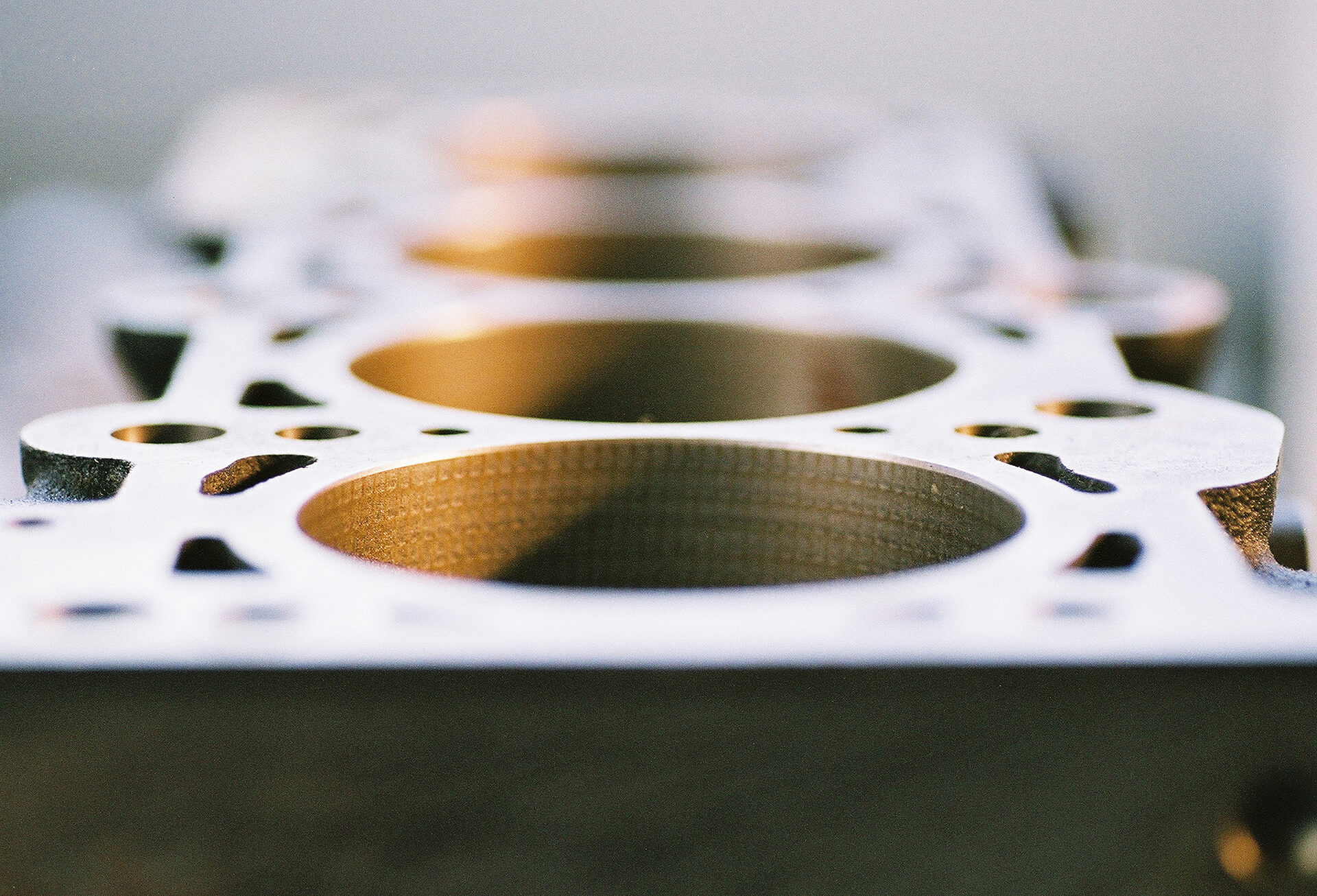

 Gebärdensprache
Gebärdensprache
 Leichte Sprache
Leichte Sprache


